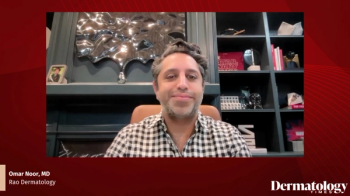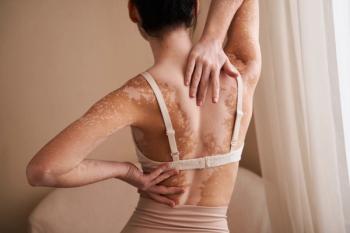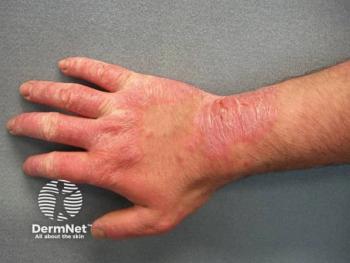
Platelet-Rich Plasma is a Potential Therapy for Lichen Planus Pigmentosus
Key Takeaways
- PRP showed potential in reducing pigmentation in lichen planus pigmentosus, with significant improvements noted in patient satisfaction and physician assessments.
- The study's limitations include a small sample size, lack of a control group, and short follow-up duration, necessitating further research.
The pilot study showed notable decreases in mean melanin index after 3 sessions of PRP injections.
A pilot study was conducted to evaluate platelet-rich plasma (PRP) as a therapy for lichen planus pigmentosus, a rare version of lichen planus.1 PRP has been used for other dermatological conditions such as androgenetic alopecia, melasma, and acne scars as well as to heal chronic wounds and other aesthetic purposes. However, this is the first time PRP has been tested for lichen planus pigmentosus.
The trial included 12 patients with lesions on the face and stable disease for at least 6 months. Participants were asked to discontinue any other medications 3 months before the sessions began. All were recruited from March to September 2023 at the Institute of Dermatology in Bangkok, Thailand. The average age was 45.92 with a mean disease duration of 2.63 years. Most of the patients were female (83.33%). Half of the group had skin phototype IV while the other half had phototype V.
A total of 3 sessions of intradermal PRP injections occurring every 2 weeks were completed. Follow-ups occurred at the 6, 8, and 12-week marks. Patients were also provided with a basic emollient moisturizer and a physical sunscreen (SPF 30) to protect the skin post-treatment. Investigators assessed skin pigmentation via the mean melanin index (MI) and clinical photographs. Subjective physician global assessment (PGA), quartile grading scale (QGS), and patient satisfaction scores were also used. At baseline, the mean MI was 448.19 and the average PGA score was 3.04 (moderate).
Mean MI was reduced to 409.64 after 12 weeks (p = 0.045). This decrease was seen after the first injection and continued to decrease, with a slight increase at week 12. Mean PGA score also declined to 2.21 at week 6, 2.04 at week 8, and 2.23 at week 12. There was a minor increase at week 12 but again, this was not statistically significant.
“Notably, this rebound could potentially be attributed to a decline in associated growth factors over time or the possibility of disease relapse, suggesting the need for studies with extended follow-up durations,” the authors wrote.
The average QGS escalated throughout the study, with the first increase noted at week 2. At the 12-week mark, 5 patients saw a good or excellent improvement in lesions that was greater than 50%. Moreover, 2 patients saw mild improvement and 5 saw moderate improvement.
The average patient satisfaction score ranged from very to extremely satisfied, according to self-evaluation. Scores increased from 8.12 at week 2 to 9.15 at the conclusion of the trial. The reported adverse effects were mild swelling and bruising at the injection sites. These resolved on their own after a few days. No participants experienced infections, hyperpigmentation, or worsening disease.
The trial does have several limitations including the lack of a control group, short-follow up time, and small sample size that includes more women than men. Future research with a larger sample size, longer follow-up periods, and longer treatment times can support these initial results.
Lichen planus pigmentosus most commonly affects middle-aged patients, particularly those with skin of color. Several treatment methods exist, including topical corticosteroids, tacrolimus, hydroquinone, retinoids, and Q-switched laser, but are relatively inconsistent.2 The intradermal PRP injections can fulfill this need, especially in treatment-resistant cases.
References
1. Kiatsurayanon C, Deeudomwongsa P, Pituvong P, Sajjachareonpong P. The Efficacy of Platelet-Rich Plasma in Facial Lichen Planus Pigmentosus: A Prospective Pilot Study. Health Sci Rep. 2025;8(4):e70455. Published 2025 Apr 9. doi:10.1002/hsr2.70455
2. Syder N, Sicco K, Gutierrez D. Updates In Therapeutics for Lichen Planus Pigmentosus. J Drugs Dermatol. 2022;21(3):324-330. doi:10.36849/JDD.6454
Newsletter
Like what you’re reading? Subscribe to Dermatology Times for weekly updates on therapies, innovations, and real-world practice tips.



















